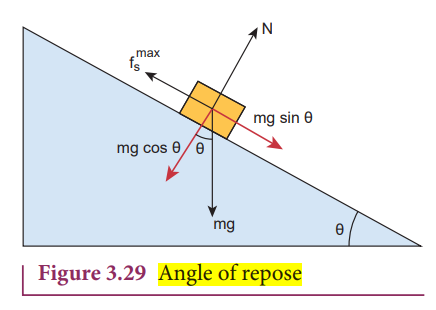Physics Quarterly
1/32
Earn XP
Description and Tags
Name | Mastery | Learn | Test | Matching | Spaced |
|---|
No study sessions yet.
33 Terms
\
Example: A book lying on a table until pushed
A stationary bus beginning to move
\
Examples: An athlete finishing a race will continue to run past the finish line
A ball will continue rolling if pushed
\
Examples: A bus moring along a straight line takes a turn to the right and the passengers move left
\
A stone and a string is whirling and if the string is suddenly cut the stone will not continue to move in a circular but will move tangential to the circle
Show it is easier to pull an object than to push it using the free body diagram
When a body is pushed at an arbitrary angle θ the applied force F can be split into two parts as F sin 0 parallel to the surface and F cos 0 perpendicular to the surface.
Total downward force acting on the body is mg+F cos θ.
This means the normal force acting on the body increases
The maximal static friction also increases. Greater force needs to be applied to push the object into motion.
When pulled at angle θ, the applied force is resolved into two pieces. The total downward force acting on the object less than the total force when pushed. Therefore, it is easier to pull an object than to push it
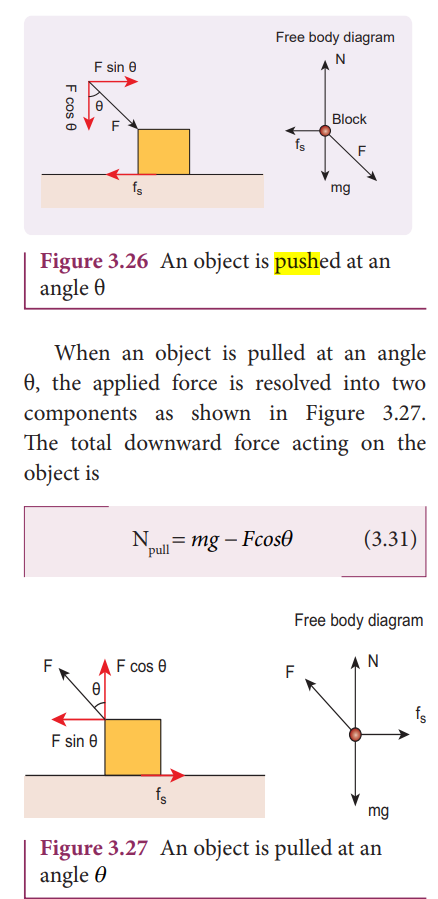
\
Kinetic Friction (force exerted by surface when an object slides)
* polishing
* stream lining
* ball bearings
* arises due to the non-inertial nature of the frame considered
* coefficiant of kinetic friction is less than coefficient of static friction
* directional of frictional force is always opposite to the motion of one body over the other
* always acts on the object parallel to the surface on which the object is placed
* magnitude of frictional force between any two bodies in contact is directly proportional to the normal reaction between them
* essential for understanding and predicting the behavior of objects in motion.
* basis for classical mechanics and are used in various fields, including engineering, physics, and everyday life.
* a real force
* acts in inertial and non-inertial frames
* acts toward the axis of rotation/center of circle in circular motion
* origin of centripetal force is interaction between two objects
* must be included in inertial frames when drawing free bodies
\
**Centrifugal**
* pseudo force
* acts only in non-inertial frames
* acts outward from axis of rotation/center of circular motion
* origin in inertia
* does not arise from interaction
\
* acts only in non-inertial frames
* acts outward from axis of rotation/center of circular motion
* origin in inertia
* does not arise from interaction
What is Newton’s First Law?
Every object continues to be in the state of rest or of uniform motion (constant velocity) unless there is external force acting on it
What is Newton’s Second Law?
The force acting on an object is equal to the rate of change of its momentum
What is concurrent force?
When lines of forces act at a common point
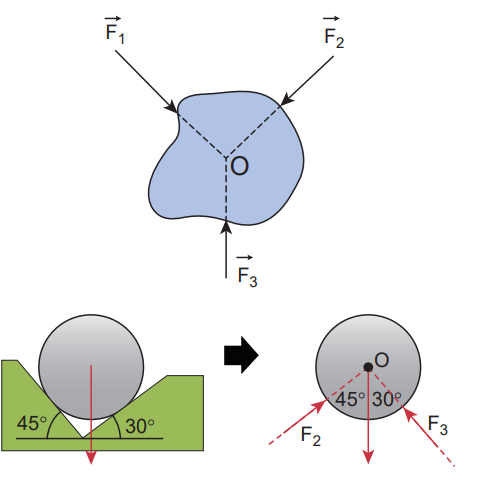
Conserved Force
conserves the total mechanical energy of a system.
When doing work the total mechanical energy of the system remains constant
The most common example of a conserved force is gravity. In the absence of air resistance and other external factors, gravity conserves the mechanical energy of an object as it moves up and down in a gravitational field.
The sum of kinetic energy (KE) and potential energy (PE) remains constant: KE + PE = constant.
Nonconserved Force
does not conserve the total mechanical energy of a system.
When doing work, the total mechanical energy of the system changes.
Friction is a common example of a non-conserved force. When an object moves across a surface with friction, some of its mechanical energy is converted into heat due to the work done against friction, resulting in a decrease in mechanical energy.
The sum of kinetic energy (KE) and potential energy (PE) is not constant: KE + PE may decrease over time due to the work done by the non-conserved force.
Conserved vs. Nonconserved Force
The distinction between conserved and non-conserved forces is based on whether the force conserves or changes the total mechanical energy of a system.
Moment of Inertia
The moment of inertia of a rigid body is the sum of moments of inertia of all such individual point masses that constitute the body
Moment of Inertia of a Uniform Rod
fix an origin at the centre of mass
take an infinitely small mass (dm) at distance (x) from the origin
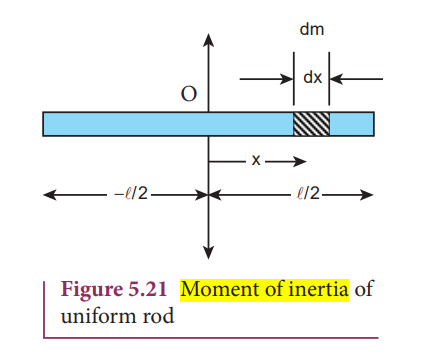
Moment of Inertia of a Uniform Ring
take an infinitely small mass (dm) of length (dx) of the ring
Dm is distance R (radius of the ring from the axis)
[
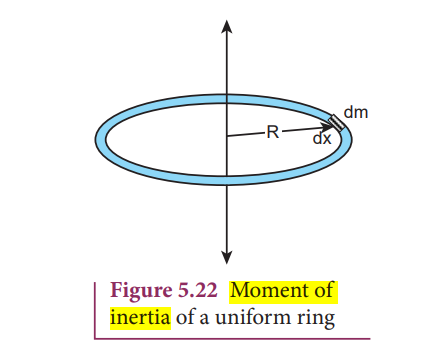
Moment of Inertia of a Uniform Disk
consider ring of mass (dm) and thinkness (dr) and radius ®
Moment of Inertia (dI) is
dI=(dm)r
Parallel Axis Theorem
The moment of inertia of a body about any axis is equal to the sum of its moment of inertia about a parallel axis through its centre of mass and the product of the mass of the body and the square of the perpendicular distance between the two axes
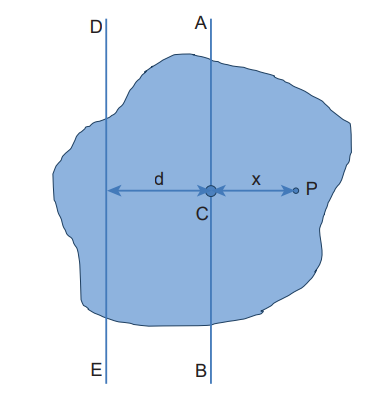
Perpendicular Axis Theorem
The theorem states that the moment of inertia of a plane laminar body about an axis perpendicular to its plane is equal to the sum of moments of inertia about two perpendicular axes lying in the plane of the body such that all the three axes are mutually perpendicular and have a common point
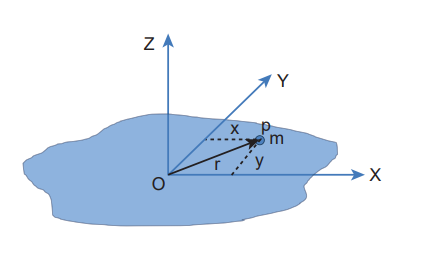
Angle of Repose
The angle of inclined plane with the horizontal such that an object placed on it begins to slide
